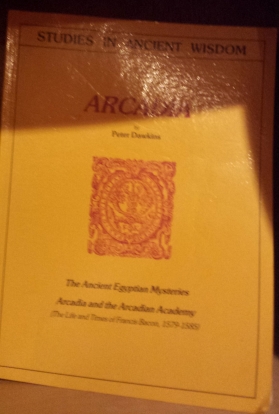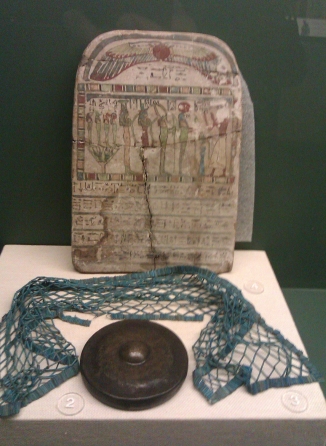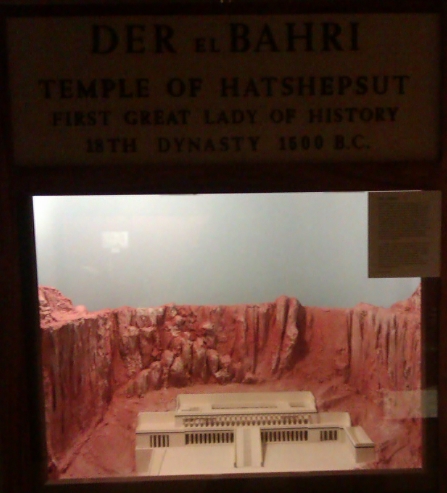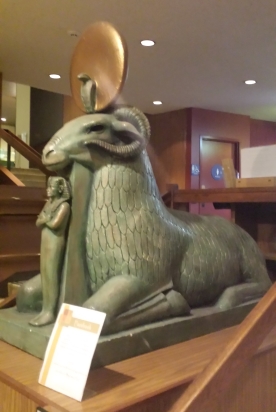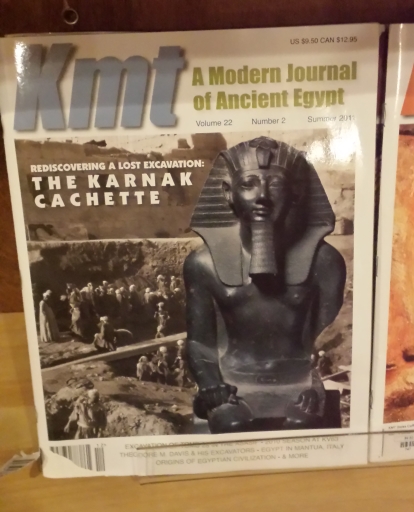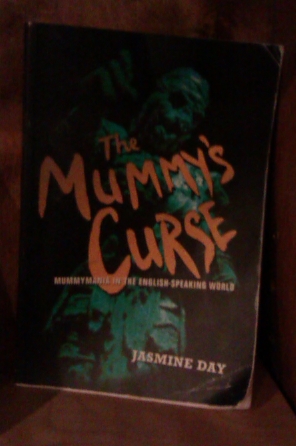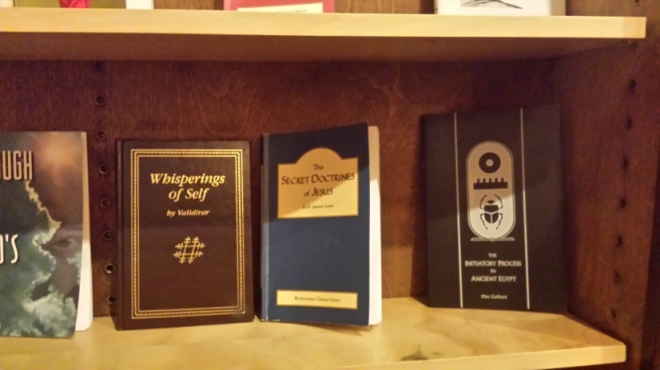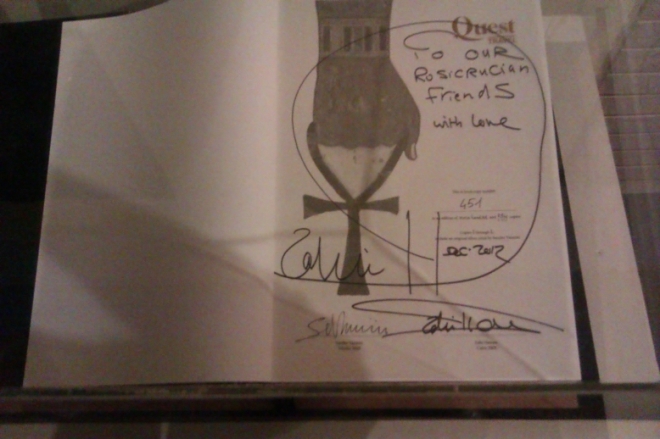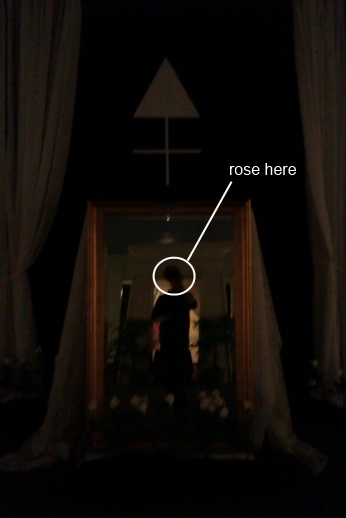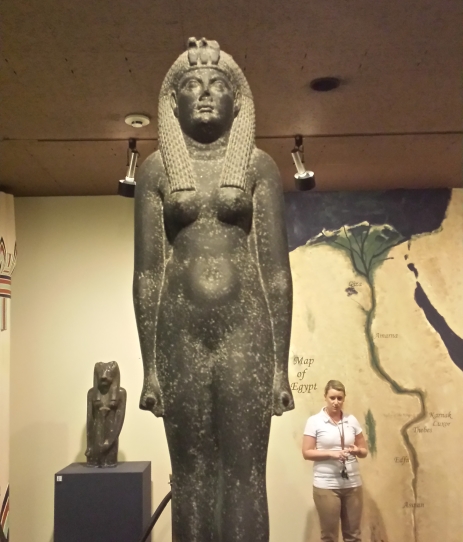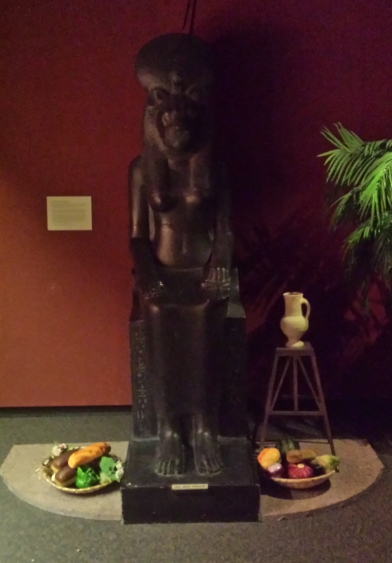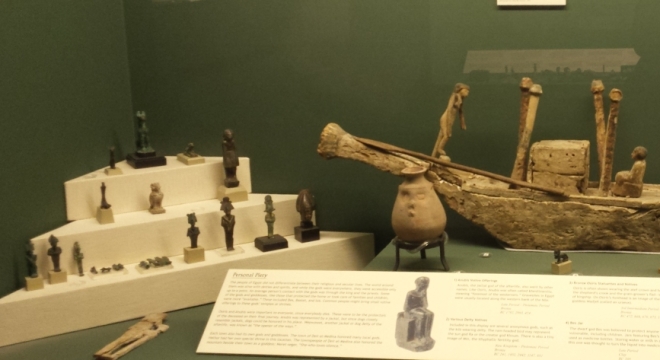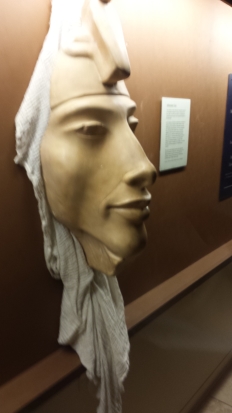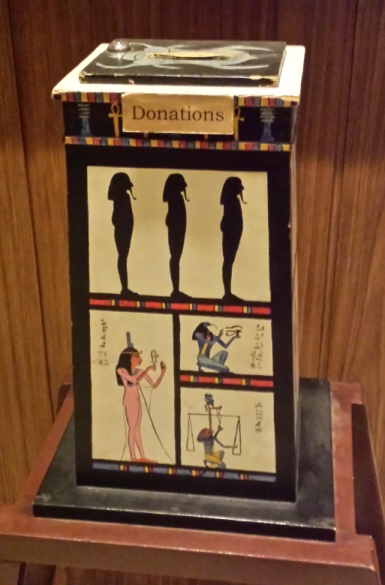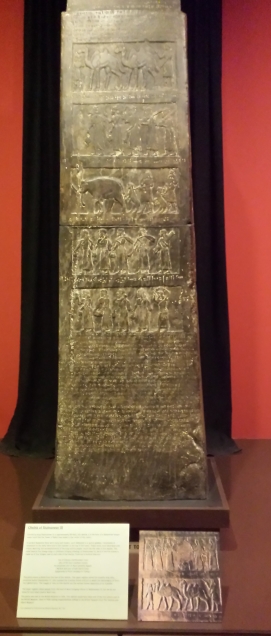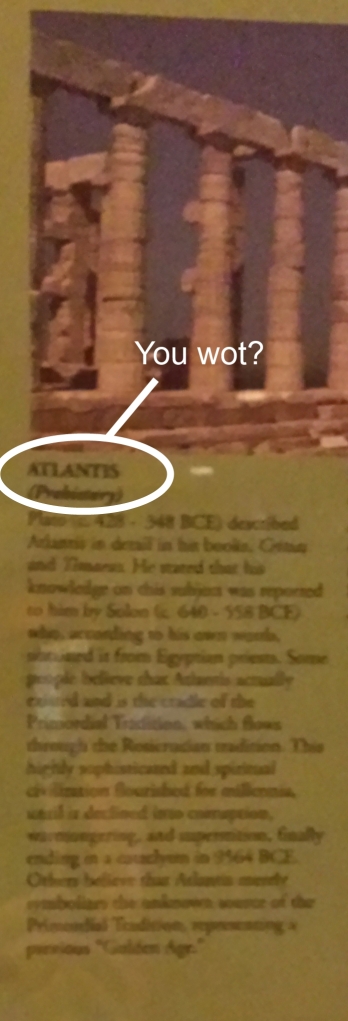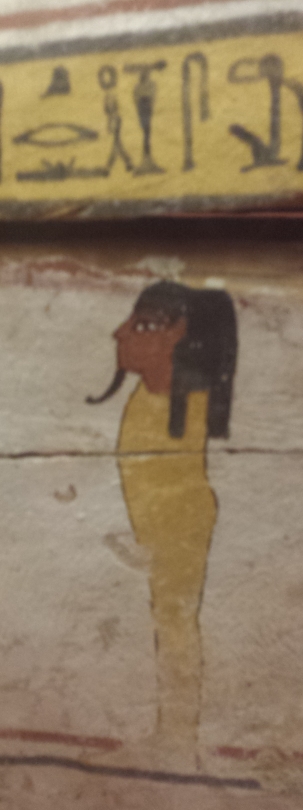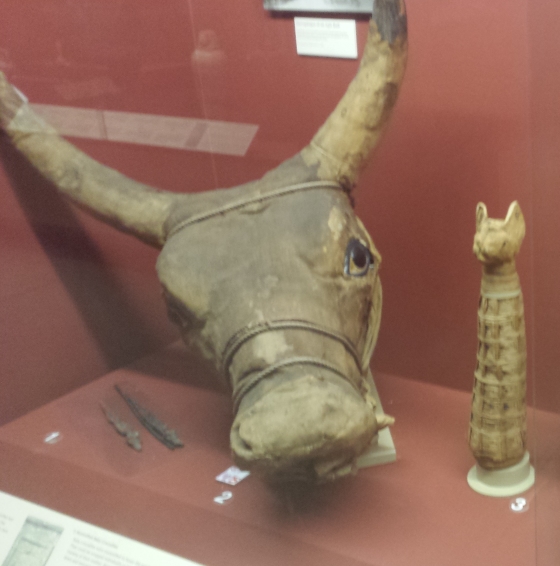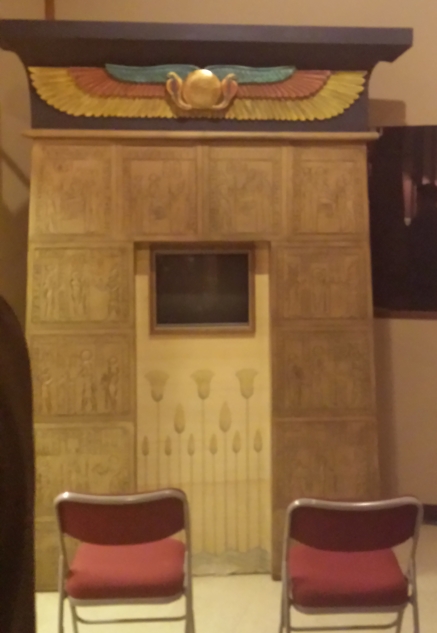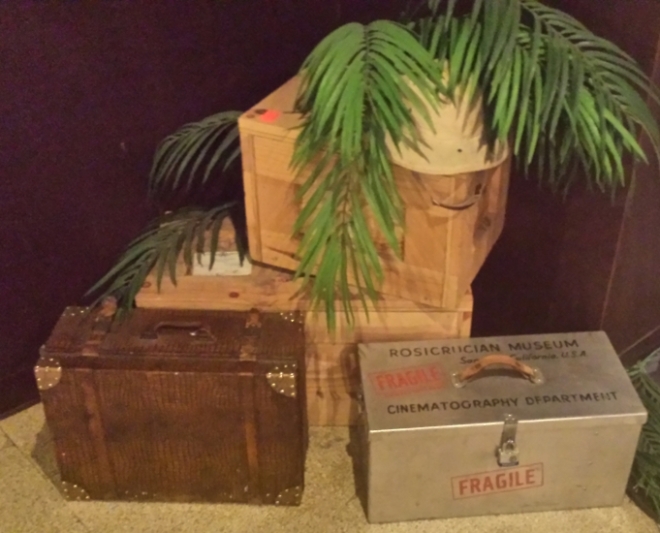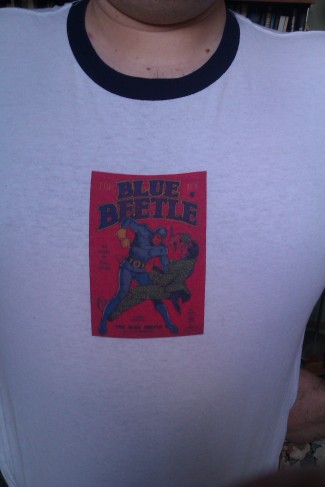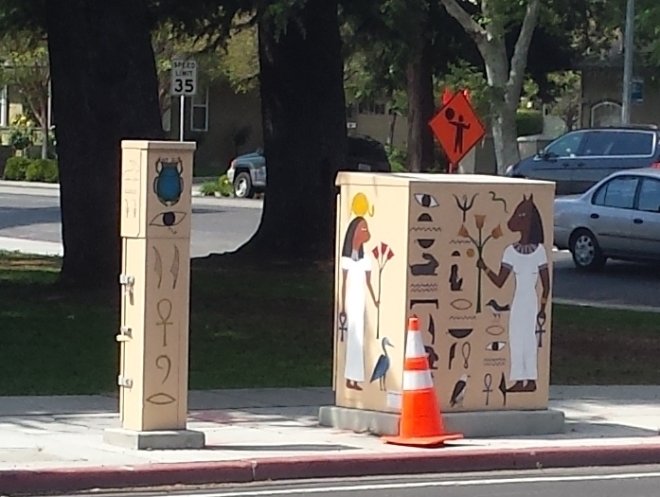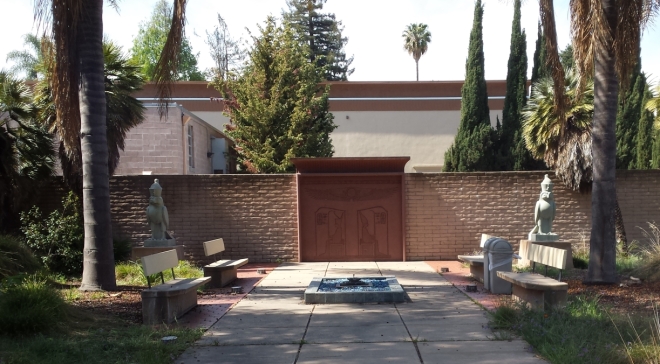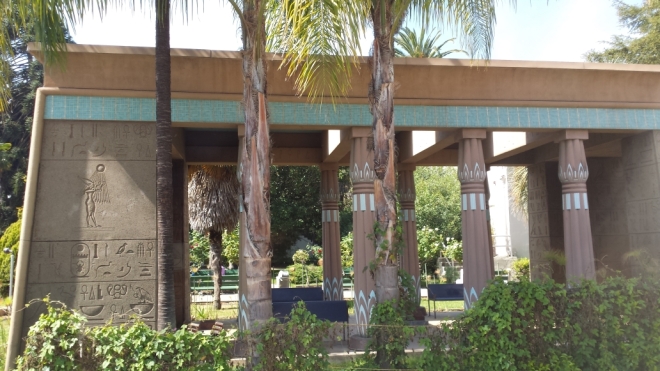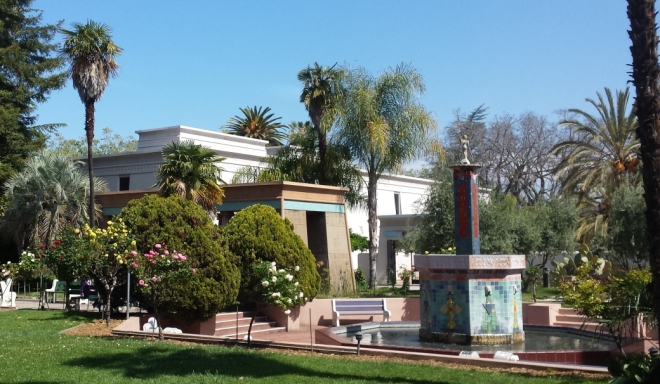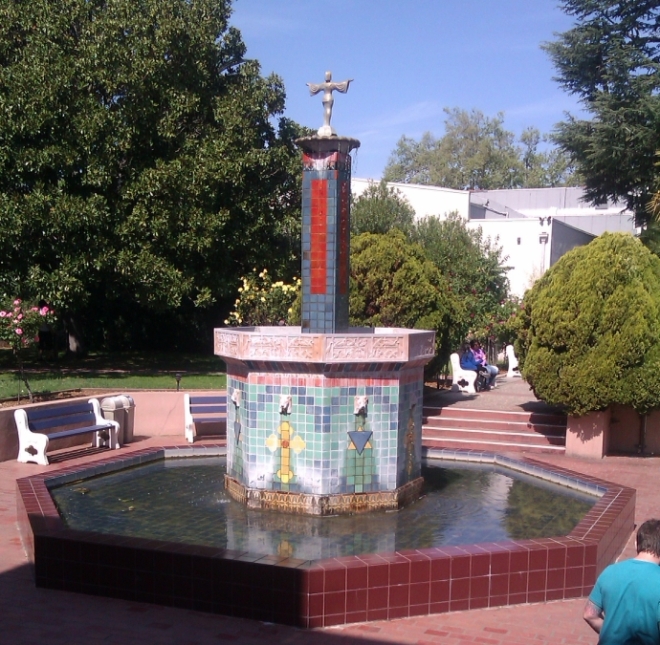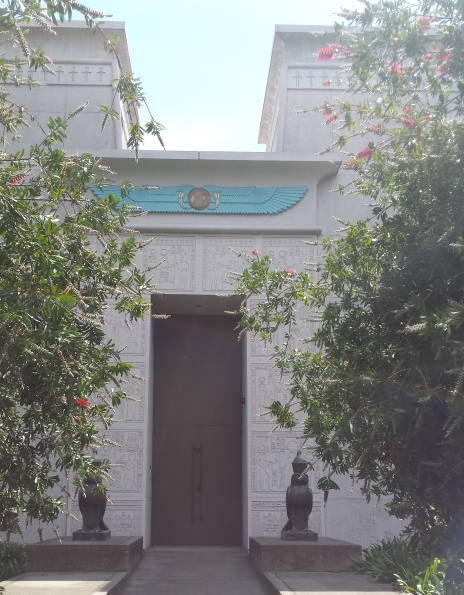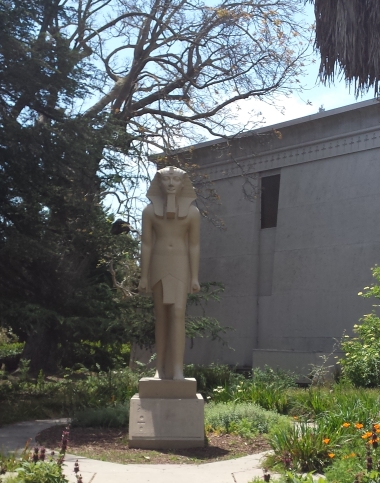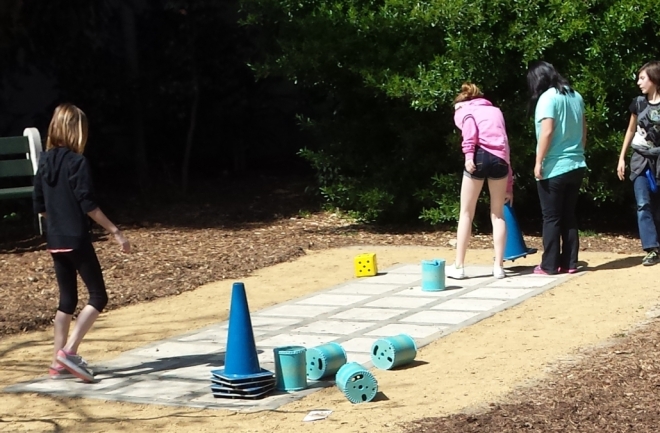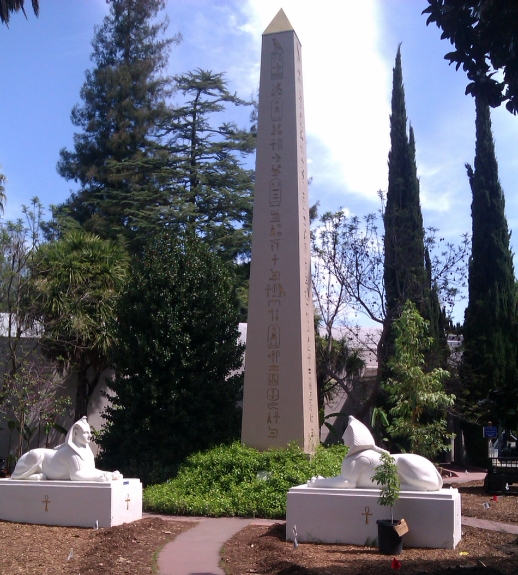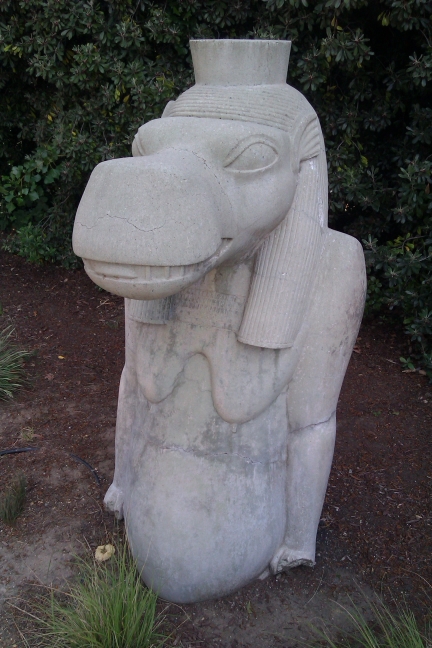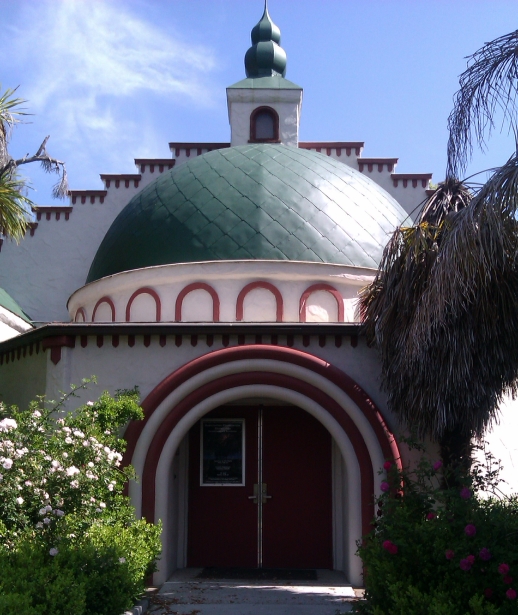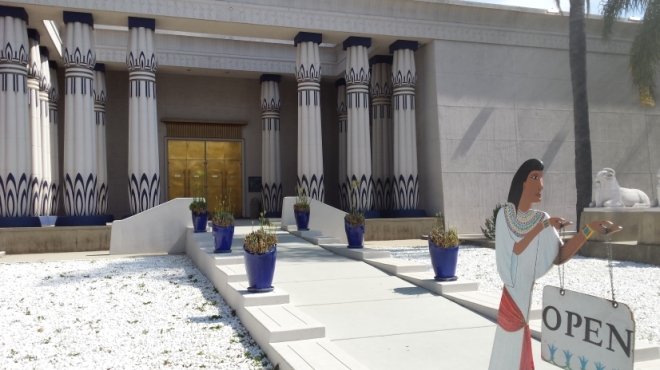Having now been through Parts One, Two and Three of my trip to the Rosicrucian Museum, it’s time to wrap up. I don’t have a clear conclusion, so this might be a bit rambling.
First off, the museum definitely succeeds as a tourist attraction. We are here on holiday, we decided to spend a morning at the museum, and we had a very good time. It’s $9 to get in (less discount for me), and that’s pretty reasonable. I think the Hollywood-Egyptian park and decoration definitely contribute to this experience — the showiness of it makes it feel special, somehow.
As I said in a previous post, I am not an Egyptologist. It’s perfectly possible that there are artefacts in here that are misidentified, or interpretation that’s either outmoded or simply wrong. I can’t comment on that. Overall, the museum is a bit of a grab bag, which may be the result of an older way of doing things. You can definitely see this in the way mummies and mummy-related objects are strewn around every part of the museum. Mummies are cool, the founder and his successors acquired a bunch of mummies, we have some empty space … you get the idea.
This approach can make people who think about museums and how they work grind their teeth, and probably rightly so. But there’s a lot about the Rosicrucian Museum that’s rather old-fashioned.
One thing that was very striking about the museum was the clear attempt to create an overall atmosphere of hushed mystery and exoticism. The lighting, the Egyptian-themed decor, the contrast between bright California day outside and golden gloom inside — it’s all part of setting the stage to produce a certain atmosphere, and it’s as far from the bright, clean look of somewhere like the British Museum or the Cambridge MAA as you can get. I think this ties back in to what kept coming up at Monstrous Antiquities, something that’s probably old hat for people who study Egypt but was a bit newer to me, the idea that Egypt — even more than “the past” or “the ancient world” in general — is held up as this place that’s full of mystery and magic and wonder and horror. And this ties a little uncomfortably into my next point.
The next and final point is, of course, the Rosicrucian thing. Now I don’t have a whole lot of inside knowledge of how AMORC works. I don’t know if they are really into their mystical beliefs, or if it’s just some symbolic dressing on a charitable organisation or what. But I think that, given that those beliefs seem to have something to do with Egypt, it’s important to keep a wary eye on the lines. And there are lines at this museum, but I’m not sure they’re very sharp ones.
The actual Rosicrucian stuff and the Egyptian stuff are kept relatively distinct in terms of how the museum is organised: there’s Rosicrucian stuff in the lobby, in the room with the benches, in the reading room and in the art gallery, but there’s no Rosicrucian stuff in any of the archaeological galleries and no archaeology in any of the Rosicrucian ones. The only exception is the reading room, where, as I mentioned, proper Egyptology and Rosicrucian stuff are piled together all willy-nilly, although this may not be the fault of the museum.
I am … not convinced that this is really enough of a separation. It ain’t the Creation Museum, but there’s still a certain amount of woo very close to the non-woo, and if I were a kid like the ones in the two tour groups that were in there at the time we were, I’m not sure I’d necessarily know the difference. In particular, I might very well come away with a sense that ancient Egypt was a pretty woo-y place, which is the pop culture perspective, right enough, but surely, surely not what we’re supposed to be trying to accomplish? Well, “we,” I dunno. Somebody.
I grew up in this part of the world, of course, and when I was a kid I went to the Rosicrucian Museum, as every kid does, and I had no idea there was anything weird about it. I didn’t find out what a Rosicrucian was until much much later. And it didn’t do me any harm, so maybe I’m overthinking it.
Have some more photos:
I can no longer hear “Akhenaten” other than to the tune of “Rockin’ Robin.”
Akhenaten! (Tweet! Tweedly-deet!)
